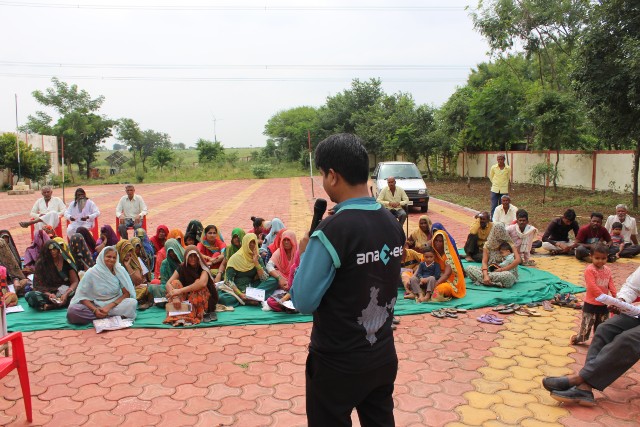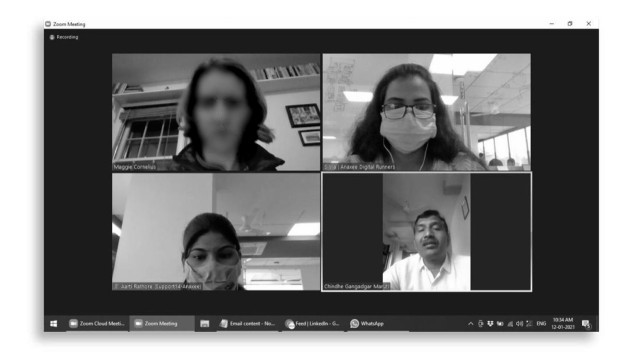BLOG

Breaking Barriers #02: Uniting Students and Farmers Across Continents
“Technology is best when it brings people together.”
There is an old and famous research institute in Illinois, United States. The institute was founded in 1867 and it has enrolled more than 56,000 students. It is one of the largest research institutes by enrollment in the United States.

In 2021, a student named Alisha took admission to the institute for completing her PhD in Agricultural Science. She was a 24-year-old bright and passionate student and her heart beats with a fervor for connecting with farmers from around the world and understanding their challenges.
Alisha was raised in a quaint farmhouse, she was always surrounded by the sights and sounds of agriculture. Her grandparents often spoke of their ancestors, who hailed from the distant land of India, a country known for its rich agricultural heritage. Alisha realized that her true roots were buried in the soil of a foreign land.
In 2019, a devastating natural disaster struck Alisha’s family and some other farming communities in her home state. The floods had ravaged the region, leaving behind a trail of destruction, wiping away livelihoods, and shattering the spirits of farmers.
No one in the region had known how to deal with such situations. Alisha remembered a story her grandparents told her when she was a kid about an Indian farming community that had dealt with such conditions very uniquely & smartly. She wished her grandparents were still around to help them all through this.
Alisha decided to learn innovative and sustainable agricultural practices to cultivate a better future for all. She had always dreamed of conducting research in India. However, due to Covid-19 and time limitations, she found it difficult to pursue her dream in person.

But, it was very important for her to do agricultural research in India. She with some of the other students of her class shared the idea of organizing some video conference calls with farmers from rural corners of India with the research institute management.
The administration of the institute liked Alisha’s idea and took this matter into consideration. After brainstorming for 7 days, the administration came out with these 7 queries-
1. Find farmers in the rural regions of India
2. Make farmers understand the research project
3. Farmers must have smartphones to do a video call
4. Good network coverage in the rural part of India to do a video call
5. India-US time zone problem
6. Language problem
7. Farmers benefit from doing this
No one had any answers to these queries. Alisha’s friend told her to give up her idea of doing agricultural research in India. Alisha went to her room in the hostel and lay down on the bed. There was a proverb written on the wall of her room-
“The difference between a successful person and others is not a lack of strength, not a lack of knowledge, but rather a lack of will.”
Alisha got up and did a Google search on how to reach the rural parts of India without actually going anywhere. She believes that somewhere, something incredible is waiting to be known. After a little research on the internet, Alisha got to know about an organization that helps brands & companies to reach out the remotest regions of India.

Alisha read some of the case studies of the organization online and got the answers to all 7 queries the research institute management mentioned.
Alisha’s favorite animal is the turtle. The reason is that for the turtle to move, it must stick its neck out. She believes that there are going to be times in one’s life when they have to stick their neck out. There will be challenges and instead of hiding in a shell, one has to go out and face them.
The next day, Alisha told the institute authority about that organization. The Authority did some review and then made a project request to the organization. The organization on the other hand understood the necessity of the project and agreed to this collaboration of uniting the students and farmers across continents.
The organization, with the help of its field executives, found around 100 farmers from the rural corners of India. These farmers had to be different from one another, such as they should be belonged to different regions and growing different crops, so the students can get varied research experiences. For finding these 100 farmers, field executives had to get in touch with around 1050 farmers residing in the remotest parts of the India.
The toughest task for field executives was to make farmers understand the project and then convince them for interacting with students through a video conference call. Field executives also had to make sure about the availability of the smartphone or any other gadget required for making a video call. The bad network coverage in most of the rural areas of India was a major challenge. Field executives had to found out places or spots where the network coverage is good for making international video calls.
Field executives worked hard and cleared all these barriers. But, the time zone & language were still two major issues to solve. For the language issue, the organization came up with the idea of using a translator guy (a person who understands both Hindi & English languages) during the live interaction of students with farmers.
It is like when a student will ask a question to a farmer in the English language, the translator guy will translate the question into the Hindi language for the farmer to understand. Now, the farmer will answer the question in the Hindi language and the translator guy will translate it into the English language for the student to understand.
Then, for the time zone issue, Alisha advised the research institute authority & Indian organization to not bothered farmers because students were ready to take the interaction video calls during night hours.
All things got settled and the Indian organization then successfully set up virtual meetings between students of the research institute in United States and farmers from the rural corners of India.
The Indian organization facilitated digital interactions between the students and around 100 farmers residing in the remotest frontiers of the country. One of Alisha’s life goals of conducting agricultural research on Indian farmers had been completed. In this research project, Alisha and all the other students got to know so much about agriculture, crops, farmers, farming struggles, and innovative and sustainable agricultural practices.
The organization, on the other hand, gives incentives to farmers for giving their time and sharing their experiences with the students of the United States.
This story of the students from the United States of America collaborating with an Indian organization to connect with the farmers of rural regions of India is a testament to the power of collaboration and the transformative potential of technology.
Let’s embrace the spirit of collaboration, reaching across borders and disciplines to create a better world. By leveraging technology + distributed human networks, we can pave the way for a brighter future—one where knowledge, compassion, and innovation know no boundaries.
Disclaimer: The above case study is based on a true story, but the names of individuals and locations have been changed to protect their privacy and maintain confidentiality. The events portrayed may have been modified for dramatic effect. Reader discretion is advised.
Anaxee Digital Runners is the Indian organization who helped students from Illinois, United States to reach the remotest regions of rural India. By using its last-mile reach & feet-on-street model, Anaxee successfully set up virtual meetings between students and farmers from the rural corners of India.
Anaxee: India’s Reach Engine
Also Read: Breaking Barriers #01- Arun’s Inspiring Journey To Higher Studies



